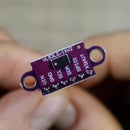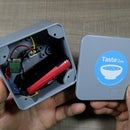Introduction: Install LED Lights in Workshop
Hi Everyone,
In this Instructable I’ll show you how I installed lights in my new basement workshop.
Step 1: The Space
I have this space in my basement that ever since I built my house, I wanted to turn it into a workshop where I can experiment and build different projects. The first step in becoming a usable space is installing a nice set of lights so I can even start to prepare it and make better video in that space as well.
Step 2: The Lights
The lights I’m gonna use are T8 style LEDs that operate directly on mains voltage. I made a teardown Instructable of one and you can check it on the link below:
https://www.instructables.com/id/T8-Mains-LED-Light-Teardown/
These lights are usually mounted with a fixture but since I have limited height, I wanted them to be with as minimal of a profile as possible.
You can find such lights on the link below (affiliate link):
T8 LED Lights
http://s.click.aliexpress.com/e/cNZ03468
Step 3: Prepare the Mounting Points
To start I’ve first marked the location where I wanted them to be and with a hammer drill I made holes in the ceiling. The ceiling is constructed with clay blocks that are hollow on the inside so to make the connecting points stronger, I’ve reinforced them with cement.
The cement is first mixed up in a plastic container and then using a cake decorating syringe, I’ve squirted some of it into the hole to fill the void. Then, a plastic wall anchor is inserted into the hole to hold the screw.
Since I’m not using a fixture for the lights, I’ve used perforated metal strip to cut small pieces and bend them over the lights to make DIY clips.
These clips are then secured in the ceiling with a single screw in the anchors that I’ve installed. The lights will then be inserted into the clips to be loosely held in place while I finish with installing the wiring.
I then repeated the same procedure for five times for all of the lights that I’m gonna install in this area. The pattern I choose was based on the number of lights and on their connection.
Step 4: Connect the Wiring
The lights require AC live wire on one side and neutral on the other where the pins on one side are combined together.
This allows me to use wire terminals that are screwed on the bulb and I can use the two terminals to bring the required connection on one and pass it to the next bulb from the other terminal.
All of the five lights are connected in parallel with a silicon enclosed stranded wire. As this will be a working space, I did not wanted to have the wires hidden in the wall as I might need to drill somewhere in future. For that, I used some hot glue to stick the wires to the ceiling and make them as neat as possible where I left some extra on each ends in case it is needed.
Step 5: Finishing Up
Once all of them were connected, I’ve glued to the ceiling the main cable and run it to where I had connected the temporary light. For now, I just connected the wires directly but soon I’ll install a junction box and run the wires for the other light as well.
To secure them in place, I’ve used small zip ties and I’ve tied all of the metal clips on the sides so they better grip the lights and they can’t fall off.
With that, it was time to test the light and I could not be happier of they way they turned out. There is a ton of light and since there are multiple lights from different angles, the shadows are minimal which is perfect for filming.
If you have any questions, then please let me know in the comments, follow me on Instructables and don’t forget to subscribe to my YouTube Channel.
Cheers!













